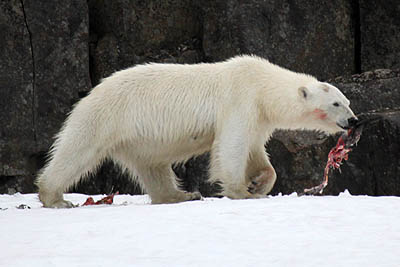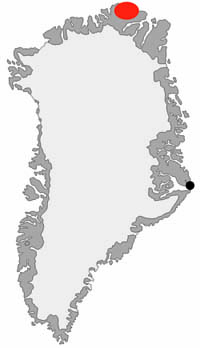-
current
recommendations- Liefdefjord
New page dedicated to one of Spitsbergen's most beautiful fjords. Background information and many photos.
- New Spitsbergen guidebook
The new edition of my Spitsbergen guidebook is out and available now!
- Liefdefjord
New page dedicated to one of Spitsbergen's most beautiful fjords. Background information and many photos.
Page Structure
-
Spitsbergen-News
- Select Month
- April 2025
- March 2025
- February 2025
- January 2025
- December 2024
- November 2024
- October 2024
- September 2024
- August 2024
- July 2024
- June 2024
- May 2024
- April 2024
- March 2024
- February 2024
- January 2024
- December 2023
- November 2023
- October 2023
- September 2023
- August 2023
- July 2023
- June 2023
- May 2023
- April 2023
- March 2023
- February 2023
- January 2023
- December 2022
- November 2022
- October 2022
- September 2022
- August 2022
- July 2022
- June 2022
- May 2022
- April 2022
- March 2022
- February 2022
- January 2022
- December 2021
- November 2021
- October 2021
- September 2021
- August 2021
- July 2021
- June 2021
- May 2021
- April 2021
- March 2021
- February 2021
- January 2021
- December 2020
- November 2020
- October 2020
- September 2020
- August 2020
- July 2020
- June 2020
- May 2020
- April 2020
- March 2020
- February 2020
- January 2020
- December 2019
- November 2019
- October 2019
- September 2019
- August 2019
- July 2019
- June 2019
- May 2019
- April 2019
- March 2019
- February 2019
- January 2019
- December 2018
- November 2018
- October 2018
- September 2018
- August 2018
- July 2018
- June 2018
- May 2018
- April 2018
- March 2018
- February 2018
- January 2018
- December 2017
- November 2017
- October 2017
- September 2017
- August 2017
- July 2017
- June 2017
- May 2017
- April 2017
- March 2017
- February 2017
- January 2017
- December 2016
- November 2016
- October 2016
- September 2016
- August 2016
- July 2016
- June 2016
- May 2016
- April 2016
- March 2016
- February 2016
- January 2016
- December 2015
- November 2015
- October 2015
- September 2015
- August 2015
- July 2015
- June 2015
- May 2015
- April 2015
- March 2015
- February 2015
- January 2015
- December 2014
- November 2014
- October 2014
- September 2014
- August 2014
- July 2014
- June 2014
- May 2014
- April 2014
- March 2014
- February 2014
- January 2014
- December 2013
- November 2013
- October 2013
- September 2013
- August 2013
- July 2013
- June 2013
- May 2013
- April 2013
- March 2013
- February 2013
- January 2013
- December 2012
- November 2012
- October 2012
- September 2012
- August 2012
- July 2012
- June 2012
- May 2012
- April 2012
- March 2012
- February 2012
- January 2012
- December 2011
- November 2011
- October 2011
- September 2011
- August 2011
- May 2011
- April 2011
- March 2011
- February 2011
- January 2011
- December 2010
- November 2010
- September 2010
- August 2010
- July 2010
- June 2010
- May 2010
- April 2010
- March 2010
- February 2010
- November 2009
- October 2009
- August 2009
- July 2009
- June 2009
- May 2009
- April 2009
- March 2009
- February 2009
- January 2009
- December 2008
- November 2008
- October 2008
- August 2008
- July 2008
- June 2008
- May 2008
- April 2008
- March 2008
- February 2008
- April 2000
- Select Month
-
weather information
-
Newsletter

| Guidebook: Spitsbergen-Svalbard |
Home → May, 2010
Monthly Archives: May 2010 − News & Stories
Polar bears feed on goose colonies
It is no news that polar bears are opportunistic feeders, taking almost anything they can get down into the stomach. Recent observations point towards a possibly increased tendency to visit Barnacle goose colonies on small islands on the west coast of Spitsbergen in the early summer, when the nests are easy prey. According to Dutch biologist Jouke Prop, in the 1970s bears visited this area only by chance when they came with drifting ice in late May or early June, without paying too much attention to breeding geese. In the 1980s, no bears were observed at all, while bear have visited the colonies frequently in recent years. Interestingly, they tend to come in late June, when there is no ice in the area, but something in the nests to feed on. — Coincidence or newly developed behaviour? Unknown so far.
In any case, after a total of 4 (!) bear visits within a few days, breeding success of the Barnacle geese was reduced to something in the area of 1 %.
Polar bear with Pink-footed goose. Edgeøya, mid July 2009
Source: Svalbard Science Forum
Large cruise ships in Spitsbergen: soon history?
Crude oil has been banned from the nature reserves in the eastern part of the Spitsbergen archipelago already in 2007, and the same legislation has been introduced to the national parks, covering large parts of the west coast, in 2009 (excluding, for some years, a route into Magdalenefjord, a popular destination for large cruise ships). Crude oil is a common fuel type for larger ships.
It is now considered to ban crude oil from all Spitsbergen waters, only excluding acknowledged shipping routes to Longyearbyen and the mining settlement of Sveagruva. This is to prevent catastrophic oil spills in case of shipping desasters.
This would factually be the end of oversea cruise ship visits to Spitsbergen or at least a drastic reduction. From an environmental perspective, a ban on crude oil in arctic waters would be very welcome.
41.387 visitors came to Spitsbergen on ships, by far most of them on large cruise ships. Some more are expected in 2010.
The oversea cruise ship Costa Magica, here in Longyearbyen on
03 August 2009, was until then the largest ship to visit Spitsbergen.
Source: Svalbardposten (19/10)
Zinc mine in North Greenland
The Citronen Fjord is not in Spitsbergen, but in Peary Land in northernmost Greenland. The zinc occurrence in Citronen Fjord are known since long ago, but are currently under investigation and mining is supposed to begin in 4 years, aiming at 300.000 tons of annual export.
The Citronen Fjord is part of the Northeast Greenland National Park. The airport near Longyearbyen is currently playing a vital role in the logistics of the investigations.
Citronen Fjord (red circle) is situated within the National Park in northernmost Greenland.
Source: Svalbardposten (18/10)
Fewer dangerous confrontations with polar bears
According to studies by master student Margrete Nilsdatter Skaktavl Keyser, dangerous confrontations between polar bears and humans have recently become less frequent, inspite of increased traffic also in remote parts of Spitsbergen. The main reason for the positive development is believed to be the decreasing number of inexperienced tourists that visit wilderness areas individually. Instead, there is an increasing trend to join organized tours with experienced guides, who work to avoid confrontations and are more likely to be able to deal with such events without shooting the animals, for example by scaring the bears away with warning shots from the signal pistol.
Scientists are now actually more likely to get involved in dangerous confrontations, including events where bears were shot in self defence. The reason is that scientists spend more time on land, also in remote areas which are frequented by bears, also in camps during the night. Additionally, not every individual researcher has the level of experience and skills that is desireable to deal with polar bears as safely as possible.
Fewer dangerous confrontations with polar bears
Source: UNIS
News-Listing live generated at 2025/April/30 at 19:37:41 Uhr (GMT+1)
































